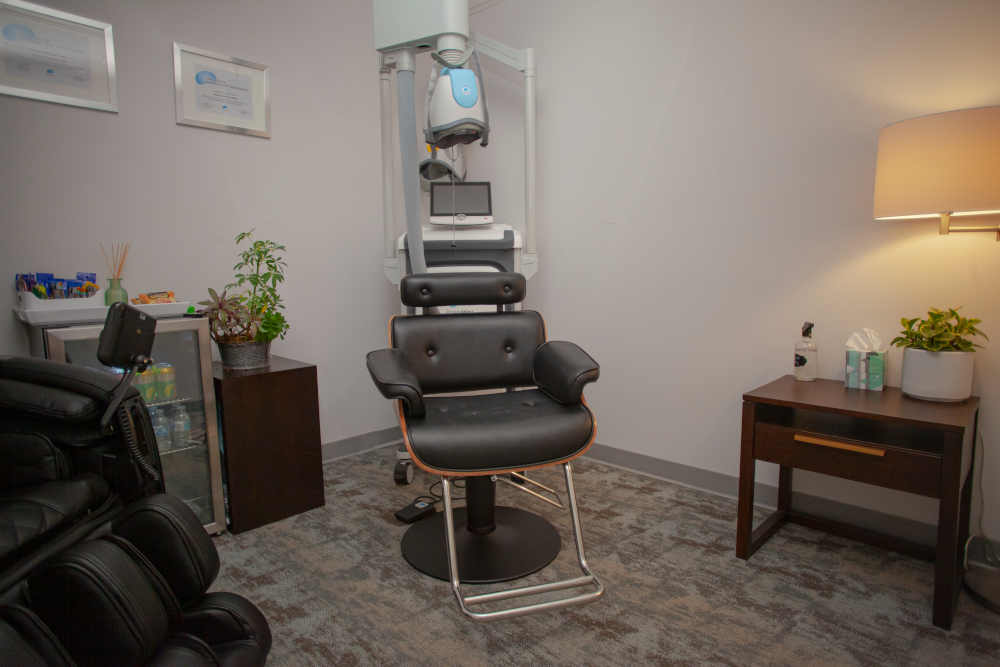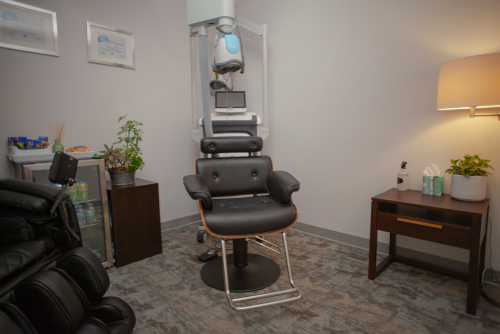Greg Thorkelson, MD with Ryan Reagan, PhD(c), LPC

Depression and Anxiety are among the most common ailments treated by mental health professionals. The most recent data from the National Institute of Mental Health reports 17.3 million adults (7.1%), and 3.2 million adolescents (13.3%) for depression. The media and advertisement casually mention statistics like—”1 out of 5 Americans suffer from depression” at any given time. Making sense of these numbers can be a challenging. You might be thinking could it be true that if I’m looking at all the people on this bus, or in this office, or in this park, 1 out of 5 is suffering with depression?
The purpose of our mental health blog is to help unpack these numbers and provide accurate information regarding mental health. With regard to treatment and diagnosis, mental illness presents unique challenges. The information or data that is used to come to a diagnosis is experiential and observational. A cardiologist can look at the circulatory system, and in some cases easily render a diagnosis—a blockage in the artery precisely here, right on the image in front of us. We simply do not know enough about the brain yet to perform with this precision.
The prevalence rates for anxiety are even higher. On anxiety, the NIMH estimates that 19.1% of adults experienced and anxiety disorder in the past year, with a lifetime prevalence rate of 31%. This is that 1 in 3 statistic that is sometimes mentioned. What do these numbers all mean? First, that both depression and anxiety are very common. Remember the scenario above? That bus, that office, that park—one out of three people have experienced an anxiety disorder.
You may be wondering, if this is so common, why is it so difficult to identify and treat? Well, as human beings many of us probably have an innate tendency to downplay and in some cases deny that there is a problem. This can happen for a variety of reasons. We may be too preoccupied with work, family, and other commitments that treatment seems an impossible inconvenience with our enormous daily responsibilities. In some cases, we may be more inclined to agree with the inner voice saying, “you got this, don’t bother x, y, z with your problems.”
We must also consider the possibility that many people may be going under-treated or not treated at all. There is a cruelty with mental illness—that brain tasked with making sense of the world, may not be in the condition to assess whether there is a problem. There are cultural issues that contribute to this as well. Many counselors are familiar with the line—“in my family we didn’t talk about feelings.”
Mental illness has a stigma associated with it, and it is very easy to go from denial that there may be a problem to denial that it is worth treating. For example, one of the features of depression is “inappropriate guilt.” This means feeling guilty for things that are not your fault. Mental health professionals also routinely hear the line “I feel bad for feeling bad” when discussing depression.
About Treatment Resistant Depression
The post was purposely titled using “difficult to treat depression” to project optimism. There is good cause to be optimistic. Treatment resistant depression is used describe a type of depression that has not responded to multiple interventions of medication and therapy. This is depression that has resisted treatment so far. There is a subset of individuals estimated at about 30% that fit this profile. The good news is that new interventions may provide relief for this population. A recent study from Stanford has reported an 90% success rate.
Historically, electroconvulsive therapy (ECT) has been the standard treatment approach for severe and unabating depression. ECT probably still suffers from the public perception of a barbaric past where it was used as a punishment. The current practice is far from this. Patients consent to treatment which occurs under sedation, as current is passed through the brain creating seizure activity. For some patients this has been the only effective form of treatment. Unfortunately, it has side effects that include memory loss. It is also a procedure that requires a hospital setting to ensure safety, along with the recovery time from sedation.
One of the additional challenges with ECT is that it is not offered at many hospitals. By one estimate it was suggested that only 1.5% of the people that are appropriate for ECT, actually end up receiving. There is clearly a problem with access and this became more obvious during the pandemic, where only some of the most severe conditions could be treated. Some individuals who benefited from ECT in the past were suddenly unable to access the services when hospitals were unable to take new patients. You simply cannot treat a large number of people with this procedure.

An Interesting Thing Happened During the Pandemic
The pandemic was a once in a generation event that forced change on the healthcare system in ways that we are probably still unaware. The standard approach mentioned in the previous paragraph proved challenging to administer. The number of patients who could receive ECT had to be reduced in some hospitals due to resource shortages. Additionally, the sedation of patients receiving ECT posed risks due to the production of aerosols that could theoretically circulate the virus.
The necessary adjusting and adapting that came with the pandemic led some doctors and patients to consider alternatives to ECT. Transcranial Magnetic Stimulation (TMS) happened to be uniquely positioned to fill a niche. TMS was approved by the FDA in 2013. Research continues to accumulate supporting its efficacy as a treatment for depression and other mental and neurological conditions. TMS is currently being explored as a treatment for Alzheimer’s, Parkinson’s, Generalized Anxiety Disorder, and PTSD.
What exactly is TMS and Why Does it Work?
TMS uses electromagnetic energy, sometimes delivered in pulses and directed to specific areas of the brain. Again, the pandemic created conditions where mental health professionals were forced to improvise in this relatively new area. As a result, data was able to be collected on the length and frequency of sessions. One of the things that we do know is that the treatment must be delivered repeatedly. The literature on TMS will sometimes refer to rTMS to denote repetitive TMS.
Again, TMS is a safe, noninvasive procedure, administered relatively easily. It can be delivered by your doctor or TMS trained technicians. It is advisable to speak to your doctor if you are considering TMS. The research and literature on TMS are developing rapidly. Researchers are exploring the delivery of TMS in intermittent bursts, accelerated time frames, and application to specific regions—as in deep TMS. The difference in terminology across the literature can easily lead to confusion.
The popular understanding of depression from a few decades ago was that it was due to a chemical imbalance in the brain. This coincided with the revolution in psychopharmacology and it was used as a way to explain how medications may help to alleviate depression. It wasn’t that this was false, a depressed brain does exhibit changes in the production of neurotransmitters. Medications that were formulated to mimic this production helped to improve brain function. But, there was also a missing piece to this. A psychiatrist on a TED Talk once explained this using this analogy—“if we were take a car and bathe the engine in oil, we know that some of that would reach the right places.”
A deeper understanding of the brain has led researchers to explore the role of circuits in the brain. Medication focused specifically on one function of the brain—the communication between neurons—in professional terms activity at the synapse. Research is now focusing on the idea that specific circuits, i.e., networks of neurons can be involved in the development of depression. This is where TMS finds applicability. The activity of TMS mimics the firing of neurons, which increases the activity in networks of neurons. Researchers are exploring delivery of TMS to specific regions of the brain implicated in depression and anxiety. We know for instance, that some conditions have overactivity in the frontal cortex and underactivity in other regions.

What Does Treatment Look Like?
A treatment session with TMS is noninvasive. A device is positioned on the outside of the scalp to administer magnetic energy that is housed in a coil within the machine. Patients who have received TMS have described the experience as feeling like a “slight tapping with a pencil.” There is an audible clicking sound as the machine works. Sessions may last from 20-30 minutes and they are done daily for series of weeks.
Patients report little to no side effects. Mild headache, tingling, sleepiness, lightheadedness, and altered cognition during the treatment were noted. Symptoms were noted to improve with successive treatments. There are certain individuals who should not do TMS, including those with known seizure disorders and those using stimulants or taking medications that may reduce seizure threshold.
TMS may be ideally suited for individuals who have not had success with antidepressants, or experienced side effects. It may be a good option for teenagers and adolescents who do not always respond well to antidepressants. TMS may also be well suited for those with chronic depression that are also employed. ECT poses obvious challenges in this area due to sedation and side effects. Since TMS is minimally invasive it can be delivered at a daily rate within about 20-30 minutes.
What Can We Treat with TMS?
Clinical research is advancing rapidly. In addition to depression there is evidence that TMS is effective in treatment of Post Traumatic Stress Disorder, Generalized Anxiety Disorder, and Obsessive-Compulsive Disorder. Each of these can be every bit as debilitating as Major Depressive Disorder. In same cases anxiety disorder overlap with depression. TMS is also being explored for potential use with neurological disorders like and dementia as in Alzheimer’s Disease. There is additional research as a possible treatment for motor dysfunctions like Parkinson’s Disease, Multiple Sclerosis, and stroke rehabilitation.

Testimonials.
Many who experience a Major Depressive Episode report passive death wish or suicidal thinking. For the purpose of the distinguishing the two, a passive death wish is generally described as a “why bother going on feeling” as opposed to thinking about or planning to take one’s life. Depression and suicidality should not be confused, not all depressed patients experience suicidal thinking. Rather the presence of depression should be considered as high-risk factor.
The risk of suicide is increased for individuals with chronic depression, as in the treatment resistant type. One of the interesting and optimistic notes in the recent Stanford study is that 19 of the 21 patients reported suicidal thoughts which is generally an exclusion criterion in clinical studies. At the close of treatment none reported the presence of suicidal thoughts. This is a preliminary study and will require additional support before firm conclusions can be drawn, but there is cause for optimism.
A recent article in Health provides a testimonial of a patient who reports having tried 19 different medications and five years of therapy with no remission in suicidal thoughts. The patient was treated with Deep TMS for approximately 42 sessions, at which point she reported no presence of suicidal thinking. She indicated a noticeable change in mood symptoms after about 15 days of treatment. Another testimonial in Healthline was reported by a long-time ECT recipient, who found TMS during the pandemic. She also reported noticeable changes within a few days of treatment.
All of this is good news for those who have suffered from treatment resistant depression. Given the challenges in administering ECT, TMS appears poised to fill some of the gaps in accessible treatment for chronic depression and anxiety. Medicare has recently approved TMS as a covered benefit. It is expected that this will increase awareness of the procedure as a possible treatment option for those who cannot do ECT or find a provider. Insurance typically requires documentation of failed responses to antidepressant treatment before authorizing. It is important to work closely with your physician to assist in this process. Five years must feel like an eternity when suffering depression. With hope, more of that treatment resistant segment of patients gets some relief, looking back on a “difficult to treat” depression in hindsight.
If you are having suicidal thoughts, contact the National Suicide Prevention Lifeline at 1-800-273-8255 for support and assistance from a trained counselor. If you or a loved one are in immediate danger, call 911.

